






Lt Cdr A. Derek A. Lawson RNVR left HMS Middleton in March 1944 and before his next posting married Flora Bleckinridge Fermor-Hesketh, daughter of the 1st Baron Hesketh (1881-1944), in London on the 12 April 1944. When her father, Rupert Baring, died in July her brother Frederick became the 2nd Baron Hesketh and lived at the family seat, Easton Neston, in Northamptonshire. She was the former wife of the 4th Baron Revelstoke and had two sons, John Baring born in 1934 and James Cecil Baring in 1938.
Derek
Lawson was marked out for a senior position in the Legal Department of
the Royal Navy but the Admiralty wanted him to have a few months command
experience before taking up this appointment. He was given command of
HMS Venomous while she was completing a refit at Falmouth in June 1944. Venomous had limped back to Falmouth from the Mediterranean in October 1943, her engines in a bad state. Most of her armaments and one
of her two boilers (and funnels) had been removed. She was no longer a
fighting ship and was to be given the humble task of towing targets for
torpedoes launched by Barracuda aircraft based on the Isle of Man.
**** **** **** **** **** ****
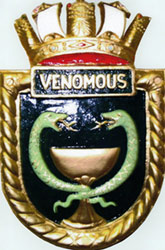 Derek Lawson was the first RNVR
officer to be given command of Venomous. He was by now a very
experienced officer but his first challenge was gaining the
respect and support of his "No 1", Lt
Frank S.H. Greenaway RNVR, known as "Raffles". Greenaway was a senior pre-war RNVR whose last
appointment had been as "No 1" on a Hunt Class destroyer and was acting
CO during the refit with the expectation of being confirmed in this
position. When this did not happen he asked to be relieved and after the publication of the first edition of A Hard Fought Ship wrote the author that "Derek Lawson did his best for me
and I was seen by Admiral Edwards [Admiral George F.B. Edward-Collins RN] who strongly advised me to stick it
out as the plan was for me to succeed Lawson after about four months
and subsequently to get a new frigate command."
Derek Lawson was the first RNVR
officer to be given command of Venomous. He was by now a very
experienced officer but his first challenge was gaining the
respect and support of his "No 1", Lt
Frank S.H. Greenaway RNVR, known as "Raffles". Greenaway was a senior pre-war RNVR whose last
appointment had been as "No 1" on a Hunt Class destroyer and was acting
CO during the refit with the expectation of being confirmed in this
position. When this did not happen he asked to be relieved and after the publication of the first edition of A Hard Fought Ship wrote the author that "Derek Lawson did his best for me
and I was seen by Admiral Edwards [Admiral George F.B. Edward-Collins RN] who strongly advised me to stick it
out as the plan was for me to succeed Lawson after about four months
and subsequently to get a new frigate command."
The crew of Venomous were only 80-85% of full strength and included several "rehabilitation rates" but her new role was not a demanding and there was an experienced "Chief", Lt(E) William R Forster RNR, to look after her temperamental engines. He was described by Greenaway as "a good one who could be relied upon to run his ER without worry". Greenaway refused to sign off for the refit "in toto" being unhappy with the state of the mast and cables "and these matters were noted in the Ship's book and the log", a matter of some consequence later.
HMS Venomous
had spent several months
on a mud berth having been removed from Silley Cox's dockyard to make
way for more urgent work related to the D-Day landings and finally
left Falmouth her refit complete on the 2 August 1944, nine months
after she returned from the Mediterranean.
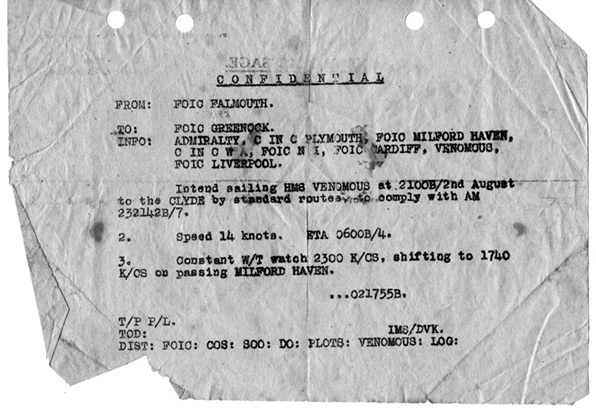 Derek Lawson kept this memo from "Eddy Edwards", FOIC Falmouth, informing FOIC Greenock that Venomous would sail for the Clyde at the start of her final commission at 2100 on 2 August 1944.
Derek Lawson kept this memo from "Eddy Edwards", FOIC Falmouth, informing FOIC Greenock that Venomous would sail for the Clyde at the start of her final commission at 2100 on 2 August 1944.
Her
new base would be Douglas on the Isle of Man. The civil airport at
Ronaldsway had been taken over by the Fleet Air Arm, renamed HMS Urley (Manx for Eagle) and was being used to train the crews of Merlin powered Barracuda torpedo bombers and HMS Venomous would go out each day as a target for
air launched dummy torpedoes. This boring routine was
occasionally interrupted when the notoriously unreliable Barracuda
crashed into the sea. Midshipman Wilfred Beckerman remembered "having
occasionally to go out and search for pilots who had come down in the
drink, sometimes at night. We never found any of them, I'm sorry
to say. When it happened at night we would cruise up and down the
allocated area with searchlights full on for a few hours until
told to return to base. I hope that they were picked up by ships
in some other zone and that the area we had been allocated was just not
at the right place."
Most evenings were spent in Douglas where one could often spend the evening ashore in a pub.
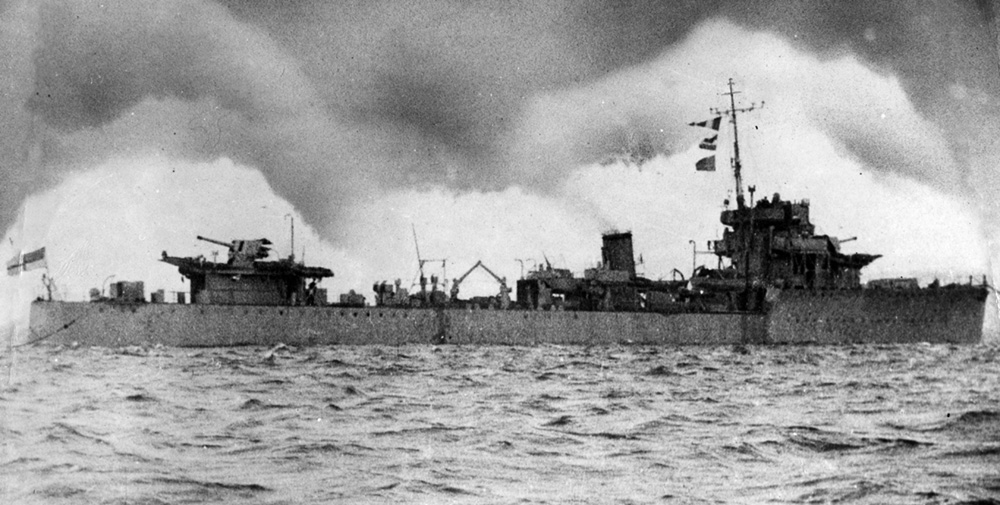
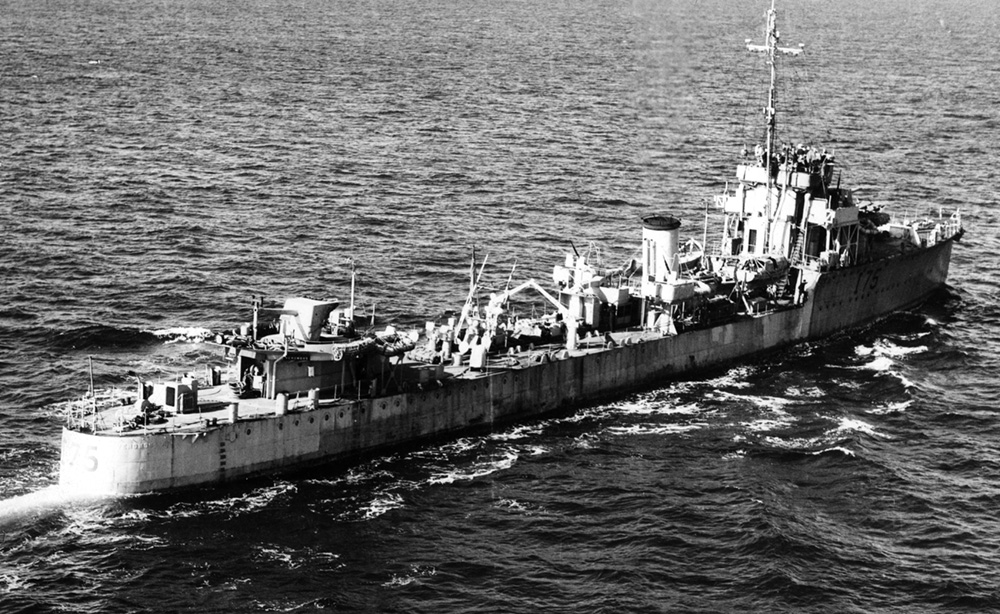
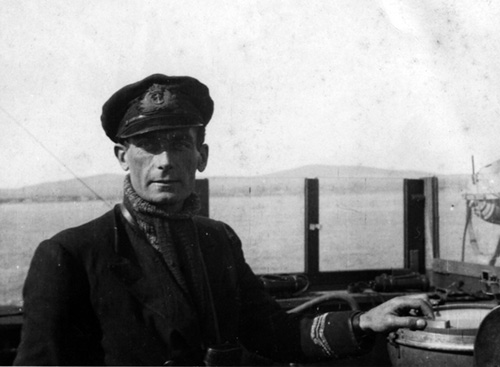
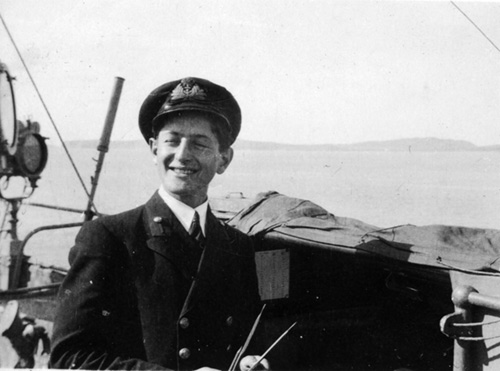
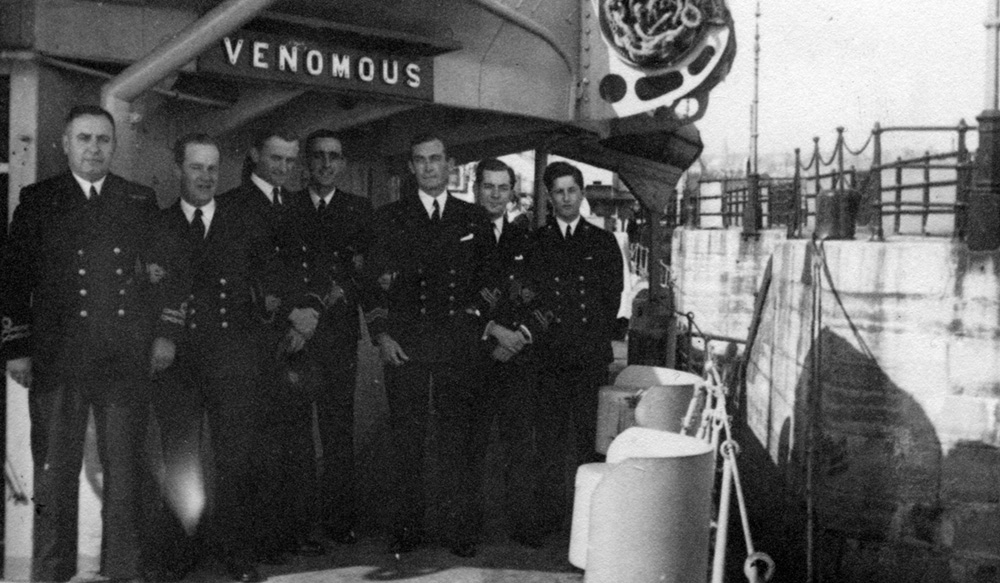

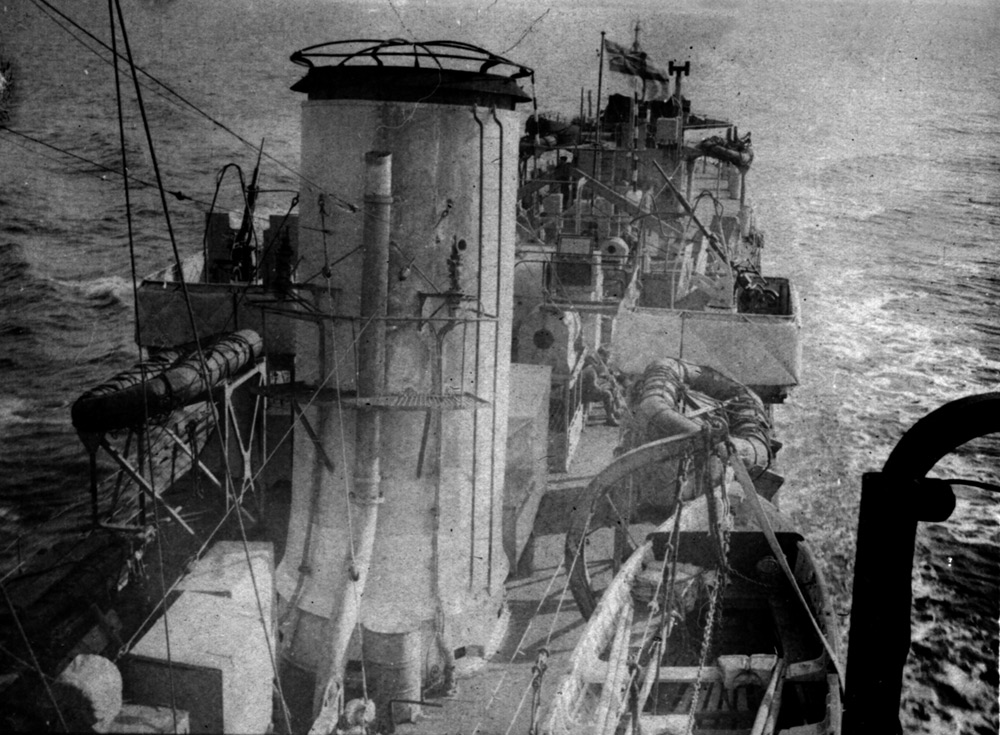
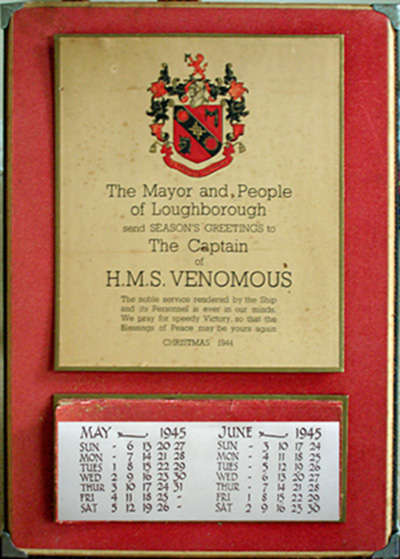
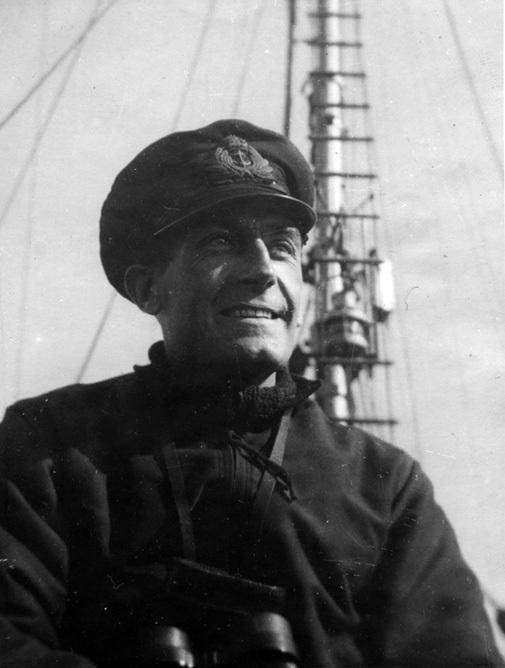
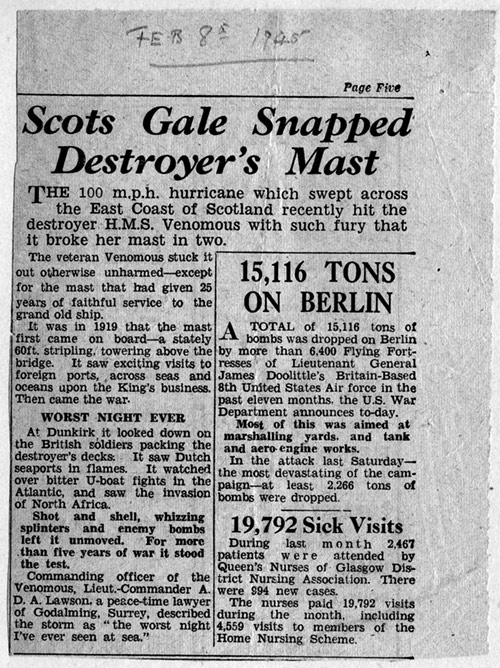
| Lt Cdr A. Derek A. Lawson RNVR - Commanding Officer | Sub Lt Thorp, RNVR - Gunnery Officer ("Guns") |
| Lt Frank S.H. Greenaway RNVR - First Lieutenant ("No 1") |
Sub Lt Martin RNVR |
| Lt Derek Caudle RNVR - Navigating Officer ("Pilot") | Mid Wilfred Beckerman RNVR ("Mid") |
| Lt (E) W.R. Forster RNR - Engineer Officer ("Chief") | |
Lt Cdr Derek Lawson RNVR left HMS Venomous while
it was under repair at Rosyth on the 6 February 1945 and took up a
senior legal position within the Personnel Services Department of the
Admiralty, attached to HMS President,the
RNVR headquarters on the Thames in London. Frank Greenaway was not
given command and left the ship to become First Lieutenant of the
frigate, HMS Hoste. Another peacetime lawyer, Lt Cdr A. Guyon Prideaux RNVR, was appointed as the last CO of HMS Venomous.
The following light
hearted photographs were probably taken after the war ended in May
"aboard ship" with his friend, Terence Morison-Scott,
a future Director of the Natural History Museum in South Kensington. He had been
awarded the DSC while commanding a flotilla of Tank Landing Craft (LCT)
at the D-Day landings in Normandy.
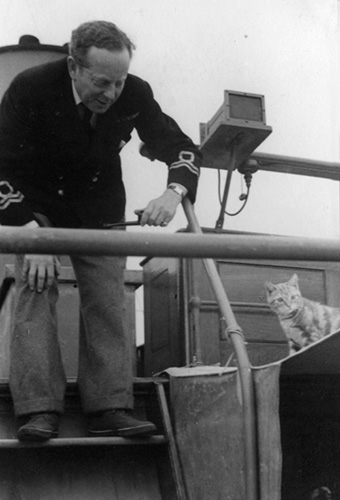
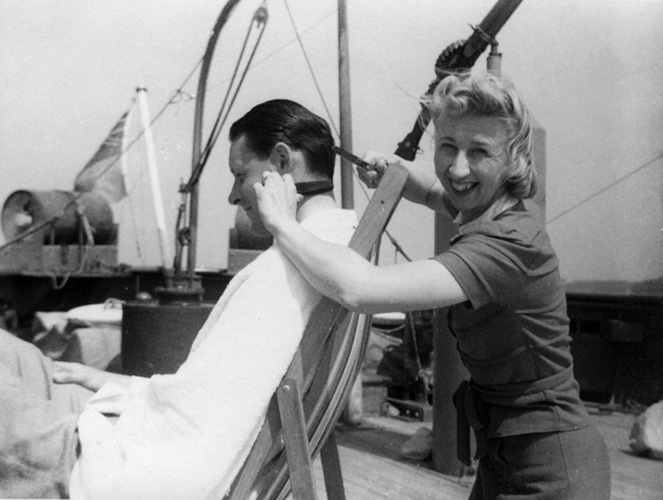
After
being released from the Navy in July 1945 Derek Lawson lived with his
wife Flora and two stepsons at Munstead Wood, and worked at a firm of
solicitors, Burch and Co., in nearby Godalming. Munstead was a
beautiful house designed by Sir Edwin Lutyens for Gertrude Jekyl which
had been rented from her estate during the war. Their daughter,
Arabella, was born while they were living at Munsted in 1946. They often visited Flora's
brother Frederick, the 2nd Baron Hesketh, at Easton Neston, the grand country house near Towcester in Northamptonshire, designed by Hawkesmore where she grew up. They moved to Passenham Manor, Stoney Stratford, Buckinghamshire, in 1951 where their two daughters, Arabella and Caroline, grew up. When Wilfred Beckerman, a midshipman on HMS Venomous in 1944 but by 1950 a lecturer in
economics at the University of Nottingham, visited his former CO he was
taken aback to have his clothes unpacked and hung up by Derek Lawson's
butler.
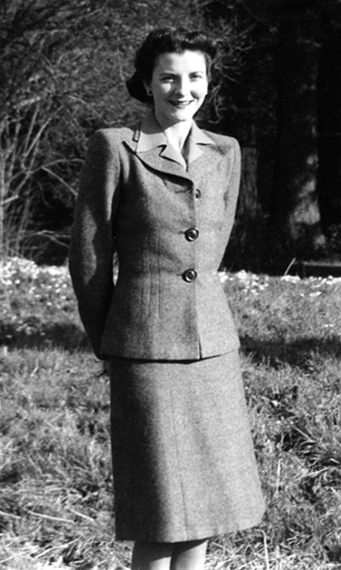
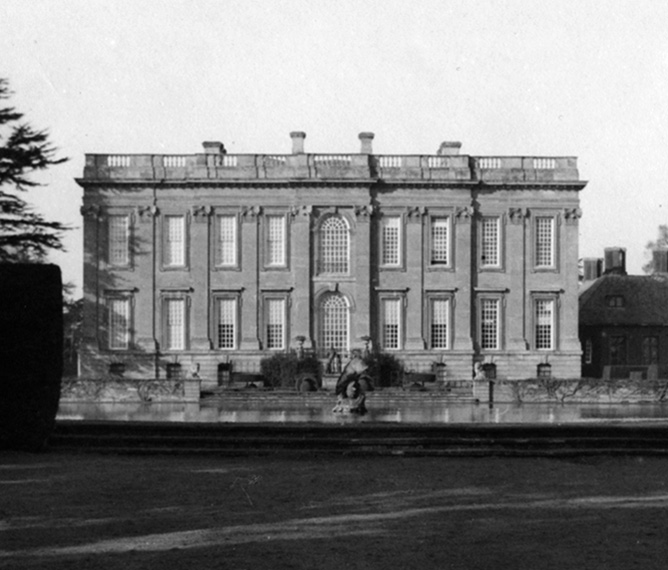
Derek Lawson's wife, Flora
Breckinridge Fermor-Hesketh, daughter of the 1st Baron Hesketh
(1881-1944) at Easton Neston, August 1945
Courtesy of Caroline Turner (née Lawson)
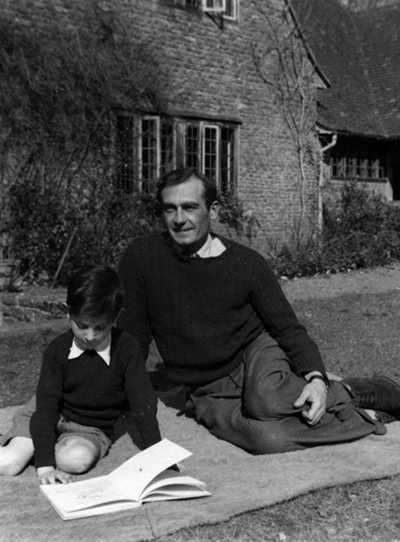
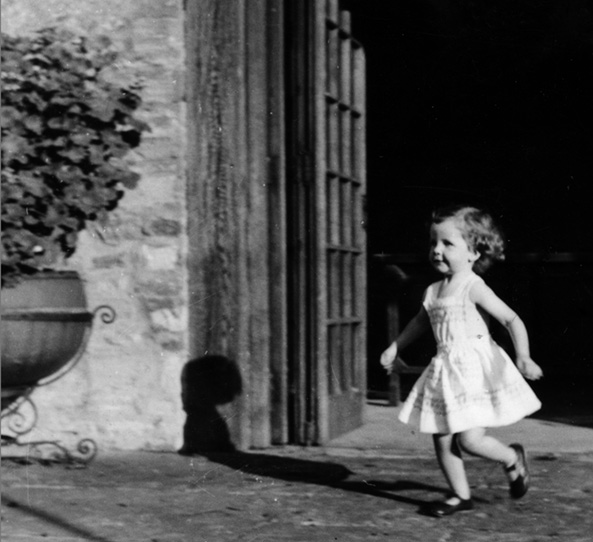
Derek Lawson with his stepson, James
Baring (1938-2012), the future 6th Baron Revelstoke, at Mustead Wood
(left) and his younger daughter, Caroline, at Passenham Manor (right)
Courtesy of Caroline Turner (née Lawson)
Although
Derek Lawson gave up practicing law when he moved to Passenham he
served as a Justice of the Peace and in 1965 was High Sheriff of
Northamptonshire. He took a great interest in the estate at Passenham
and the parish church of St. Guthlac. Flora Lawson was only 57 when she
died at Easton Neston on the 15 September 1970, a great blow to Derek
Lawson who was seven years older. She was buried in St. Guthlac's
Church at Passenham. In 1983 Derek Lawson married a second wife,
Elizabeth Sarah Polk Shaughnessy who was born in 1913, the same year as
Flora. He was her fourth husband. Derek Lawson died four years later on
the 13 March 1984 and is buried with Flora in the parish church of St.
Guthlac.